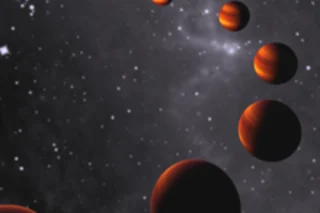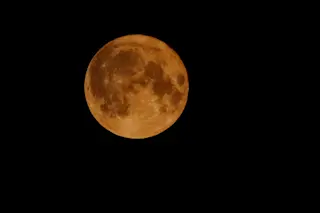Four hundred years ago, Galileo observed the phases of Venus as the planet orbited our sun and caught its light in different ways, helping to disprove the idea that all celestial bodies twirled around the Earth. Now, the professional descendants of Galileo have observed the phases of an exoplanet for the first time, observing the distant planet in the act of orbiting a foreign star. The planet, CoRoT-1b, is about 1,600 light years away from Earth, and was discovered about 2 years ago. It's a "hot Jupiter," a class of exoplanets that are
the size of Jupiter but orbit very closely to their stars (CoRoT-1b orbits its star in just 36 hours). Hot Jupiters are expected to be tidally locked, with one side always facing their stars, the other permanently dark (our own moon is tidally locked with the Earth, only showing its "near side" to us) [SPACE.com].
Using the ...














